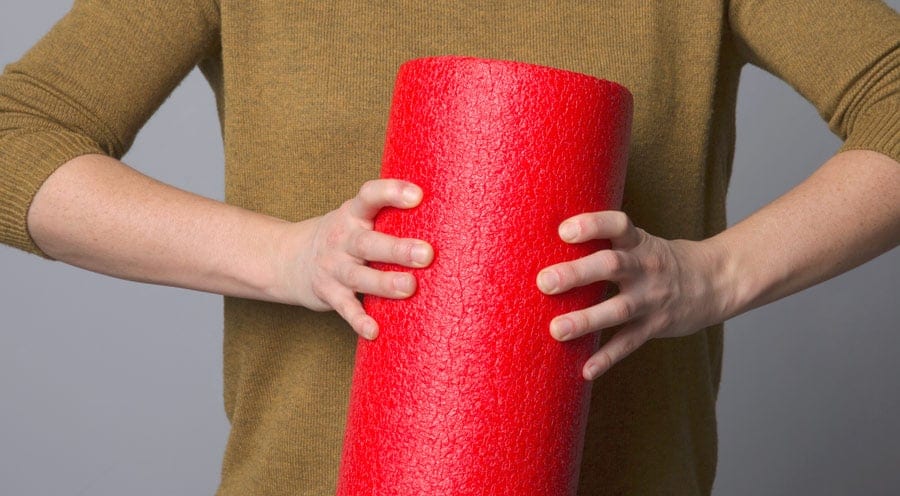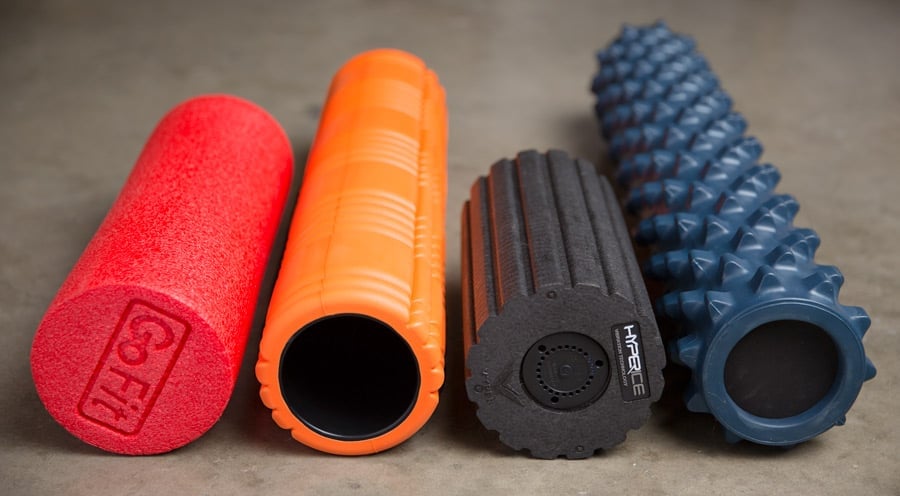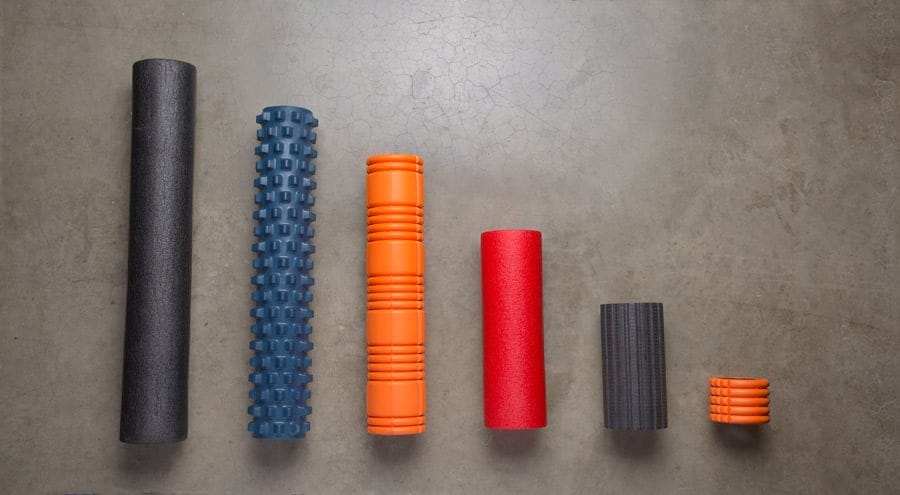Foam rollers let you to do your own deep-tissue massage, also known as "self-administered myofascial release" (SMR). The process lets you use your own body weight, precisely controlled, to help stimulate and relax your muscles.
If you've already tried using a foam roller, you may have a love/hate relationship with it. The process of using the roller can be uncomfortable, but massaging knots (also called trigger points or myofascial adhesions) may help free your muscles of their grip. Some athletes report increased range of motion, improved blood flow and decreased recovery time after foam rolling.
When shopping for a foam roller, there are three main considerations:
- Density: Foam rollers come in different densities, which determines how they feel and who they are best suited for.
- Surface texture: Some foam rollers have ridges and knobs for applying different amounts of pressure while other rollers are smooth.
- Shape and size: The shape and size of the foam roller affect how you use it.
Foam Roller Density

Foam rollers come in different densities, which is a primary factor in how effective they are at deep-tissue massage. Using a roller that is too soft can provide inadequate pressure while a foam roller that is too hard can cause bruising and trauma, which can result in pain and have a negative effect on your performance.
If you're just starting out with using a foam roller, choose one that's on the softer side. As your technique improves and your muscles adapt you can progress to using a denser (harder) roller. Denser rollers are also better for long-term use because they're more durable. Softer rollers can get permanently deformed after lots of use, which is an indication that it's time to replace the roller.
The color of the roller can give a hint to its density, with white being softest and black hardest. Blue and red rollers typically are medium density. This can vary by brand, though. A simple way to test is to squeeze rollers to assess their relative firmness.
Foam Roller Surface Texture

Some rollers have ridges and knobs that allow you to apply different intensities of pressure and to do a more targeted massage. Other rollers are smooth.
Smooth rollers: This basic design provides even pressure across the entire length of the roller. A smooth foam roller is a good choice for someone who is just getting into rolling because the pressure is not as intense as with a textured roller. Also, smooth foam rollers are typically less expensive than textured rollers.
Textured rollers: Mimicking the hands of a masseuse, ridges and knobs on a foam roller can provide more precisely targeted massage to work out knots in your muscles. Many rollers include a variety of texture so you can find the right amount of pressure.
Foam Roller Shape and Size

Foam rollers are available in a range of shapes and sizes.
Length: Long rollers (around 36 inches) are versatile and a good choice for your first foam roller. They work well for your back because they are long enough to span your entire back when placed perpendicular to your spine. They're also more stable than shorter rollers when you're working on your quads, hamstrings and other body parts.
Shorter lengths (around 24 inches) work well to target smaller areas like arms and calves. The shortest lengths (around 4 - 12 inches) work well for portability and in workout areas with limited floor space.
Diameter: Most rollers are 5 or 6 inches in diameter, which is a comfortable height for easing your body onto and then rolling under control. Some people choose 3- or 4-inch diameter rollers for deeper, more targeted massage.
Half round foam roller: These look like a foam roller that has been cut in half lengthwise. They are used for leg and foot stretches, and to massage the arches of the feet to relieve the symptoms of plantar fasciitis.

Foam-covered roller massagers (sticks): Similar in shape to a rolling pin, these rollers are used primarily on legs for more precise pressure regulation and muscle targeting. Flexible roller massagers are great for massaging your upper back.
Foam balls: These allow precise targeting and pressure control, and work well in curved areas of the body, like the lumbar area.

